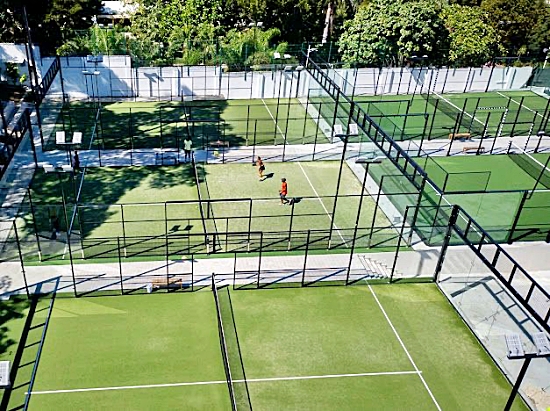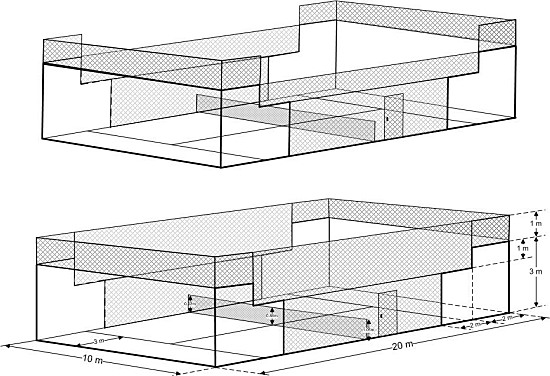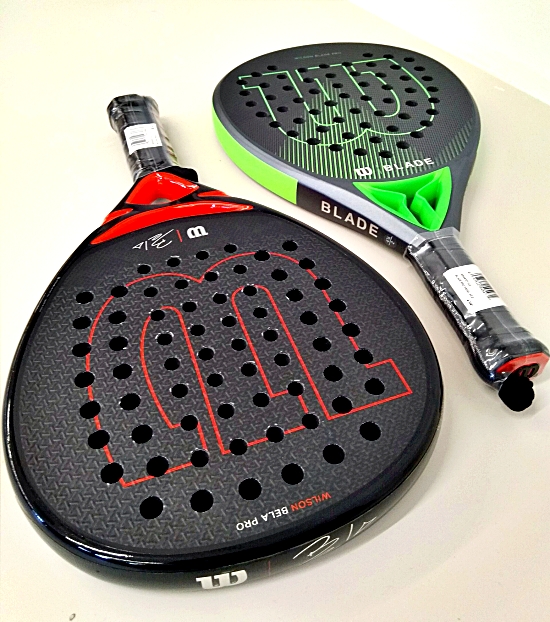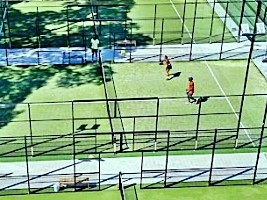|
||||||||||||||||||
|
|
Haiti - Sports : First club of Padel in Pétion-ville with already 300 members 09/01/2024 07:16:00
The Club de padel of Pétion-ville has 300 members, all diligent players and Vorbe and Baigts are very confident of the progression of Padel in their club. Jean-Luc Vorbe, who played high-level tennis for 10 years in international competitions including the Davis Cup, under the colors of Haiti, has now been playing Padel for 2 years now. Haiti will defend its colors at the 3rd International Cup of Padel Clubs 2024 (October 3 to 6, 2024) in Malaga (Spain). The Pétion Ville Club will present a selection of 4 male and 2 female players.  Latin American and Caribbean countries with the most TOP 5 Clubs: Argentina 697 clubs Chile 297 clubs Mexico 234 clubs Brazil 200 clubs Paraguay 181 Clubs Top 3 countries with the fewest clubs: Dominican Republic/Peru 4 clubs Bolivia 2 clubs Haiti/ El Slavador/ Guatemala 1 clubs Learn more about Jean-Luc Vorbe: Jean-Luc Vorbe abandoned high competition to do his higher education in France. He lives half the year in Haiti where he has his professional activities and the other half in Tahiti, the country of his wife and children. In Tahiti he trains at Padel several times a day at President Alain Siu's Phénix club. "With the José Solano academy and his coaches, I tried to transpose my tennis training with those of the Solano academy: to have perfect physical condition to allow me to be able to move quickly, even more in padel than in tennis, listening, repeating each exercise as if I were in a match, making videos and, thanks to the European Association of Padel Clubs (AECP), being able to play matches against Pierre, Pascal, Spanish players," xplains Jean-Luc Vorbe. Find out more about Padel: Padel is a racket sport which is played on a court framed by windows and/or fences, the court of which is divided by a net. Historically, padel is an adaptation of tennis and therefore shares several similarities with it. The International Padel Federation (FIP) was founded in 1991 in Madrid by Argentina, Spain and Uruguay. Padel is only played in doubles and the service must be done with a spoon. Its biggest difference from tennis, however, is that balls can be played after bouncing off the walls, like in squash or tennis. The tournaments are classified by category. In the "Premier Padel" circuit, the 4 most important tournaments are grouped under the "major" label, below the "P1 tournaments", then the "P2 tournaments". These circuits now organize international competitions (18 countries on 5 continents for the Premier Padel circuit in 2024). These circuits bring together the best players in the world. There are 2 padel court configurations :  The field measures 20 meters long and 10 meters wide. A net and two service squares constitute the field (no lane lines, no baselines). The walls are a distinctive feature of Padel. They can be made of (tempered) glass or metal mesh, and are used to play bouncing balls, which brings an additional tactical dimension to the game. A 3 meter high back wall closes the court over the entire width, it is surmounted by a one meter fence and extended at right angles on each side of the length of the court by a 2 meter wall. The two 2 meter return walls are linked to their equivalents on the other side of the field by a 12 meter long fence. The playing surface is synthetic turf or similar. Padel rackets :  The rackets are filled with foam and do not have strings; their striking surface is pierced with holes. With a mass of around 370 g on average, they use materials already present in other racket sports (carbon, kevlar, graphite, fiberglass). The thickness of a racket is 38 mm (according to FIP regulations). The different densities of ethylene-vinyl acetate foam filling the sieve. The shape of the racket (round, diamond, drop of water) and the distribution of mass (head, head, bridge) make it possible to obtain models adapted to a “touch” game or a style of play based on the power". A safety cord connecting the racket to the player's wrist is inserted into the end of the handle; the FIP stipulates that its use is compulsory. Balls : Padel balls are similar to tennis balls, but with lower pressure. They must be yellow or white for official competitions. The diameter of the ball is between 6.35 and 6.77 centimeters and its weight varies between 56 and 59.4 grams. SL/ BF/ HaitiLibre
|
|
|
Why HaitiLibre ? |
Contact us |
Français
Copyright © 2010 - 2024 Haitilibre.com |



